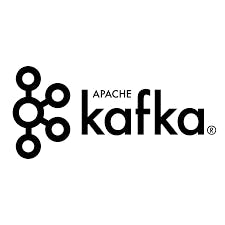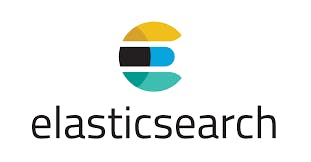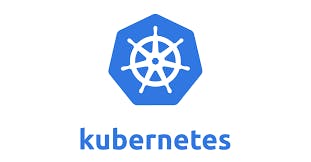Introduction
In today's data-driven world, managing and processing large volumes of data efficiently is crucial for organizations across various industries. To address this challenge, the data infrastructure space offers a wide range of tools and technologies that enable organizations to store, process, and analyze data effectively. In this article, we will explore some of the famous tools and technologies that have made a significant impact in the field of data infrastructure.
Apache Hadoop: Revolutionizing Big Data Processing

Apache Hadoop has revolutionized the world of big data processing. It is an open-source framework that provides distributed storage and processing capabilities. At its core, Hadoop consists of two main components: the Hadoop Distributed File System (HDFS) and the MapReduce programming model.
HDFS enables the storage of large datasets across multiple machines, allowing for fault tolerance and high availability. MapReduce, on the other hand, provides a scalable and distributed processing model that allows users to write parallelizable algorithms to process data in a distributed manner. Hadoop's ability to handle massive amounts of structured and unstructured data has made it a popular choice for organizations dealing with big data challenges.
Apache Spark: Powering Real-Time Data Processing

Apache Spark is another popular tool in the data infrastructure space, known for its fast and scalable data processing capabilities. It offers a unified analytics engine that supports batch processing, real-time streaming, machine learning, and graph processing. Spark's in-memory processing model allows it to perform computations up to 100 times faster than traditional batch processing frameworks.
With its rich set of APIs and libraries, Spark has become a go-to choice for organizations that require real-time data processing and analytics. It also provides seamless integration with other tools like Hadoop, enabling organizations to build end-to-end data pipelines for complex data processing workflows.
Apache Kafka: Enabling Real-Time Data Streaming

In the era of real-time data-driven applications, Apache Kafka has emerged as a game-changer. Kafka is a distributed streaming platform that provides high-throughput, fault-tolerant, and scalable data streaming. It allows organizations to build real-time data pipelines and implement event-driven architectures.
Kafka's publish-subscribe messaging system, combined with its distributed architecture, ensures that data is reliably delivered to multiple consumers in real-time. This makes it suitable for applications such as log aggregation, real-time analytics, and data integration across various systems.
Apache Cassandra: Scaling Distributed NoSQL Databases

Apache Cassandra is a distributed NoSQL database designed to handle massive amounts of data across multiple commodity servers. It offers high availability, fault tolerance, and linear scalability, making it an ideal choice for applications that require high throughput and low latency.
Cassandra's decentralized architecture ensures that data is distributed across multiple nodes, eliminating single points of failure. Its flexible data model allows for easy scalability and schema changes without sacrificing performance. Cassandra has found applications in various industries, including finance, e-commerce, and social media, where scalability and high performance are critical.
Apache Storm: Real-Time Computation at Scale

Apache Storm is a distributed real-time computation system that enables the processing of streaming data in real time. It provides fault tolerance, horizontal scalability, and low-latency processing capabilities, making it suitable for applications that require real-time analytics, event processing, and stream processing.
Storm's architecture consists of spouts and bolts, which together form processing topologies. Spouts are responsible for ingesting data from various sources, while bolts perform transformations and computations on the data. Storm's ability to process data at scale and its fault-tolerant nature has made it popular in use cases such as fraud detection, sensor data analysis, and social media sentiment analysis.
Apache Flink: Unified Stream and Batch Processing

Apache Flink is an open-source stream processing and batch processing framework that offers unified capabilities for both real-time and batch data processing. It provides low-latency and high-throughput data processing with support for event-driven applications, real-time analytics, and large-scale batch processing.
Flink's unique feature is its ability to handle both batch and stream processing workloads within a single engine. It supports various APIs and libraries for data transformations, complex event processing, and machine learning. Flink's flexibility and performance have made it popular in industries such as telecommunications, IoT, and finance.
Elasticsearch: Powerful Search and Analytics Engine

Elasticsearch is a highly scalable open-source search and analytics engine built on top of the Apache Lucene library. It is designed to handle large volumes of data and provide real-time search capabilities. Elasticsearch allows organizations to index, search, and analyze structured and unstructured data with ease.
With its distributed architecture and built-in support for near real-time indexing, Elasticsearch is widely used for applications such as log analytics, monitoring, e-commerce search, and content recommendation systems. Its powerful search capabilities, combined with the ability to perform complex aggregations and analytics, make it a popular choice in the data infrastructure space.
Apache Airflow: Workflow Management and Orchestration

Apache Airflow is an open-source platform used for programmatically authoring, scheduling, and monitoring workflows. It allows organizations to create complex data pipelines with task dependencies, scheduling, and execution capabilities.
Airflow provides a web-based user interface to design and manage workflows, and it supports various integrations with other tools and technologies. It enables organizations to build scalable and maintainable data pipelines, making it easier to orchestrate complex data processing workflows.
Kubernetes: Container Orchestration for Data Infrastructure

Kubernetes is an open-source container orchestration platform that has gained significant popularity in the data infrastructure space. It automates the deployment, scaling, and management of containerized applications and provides a robust infrastructure for running distributed applications and microservices.
With Kubernetes, organizations can deploy and manage data processing workloads in a scalable and fault-tolerant manner. It offers features such as service discovery, load balancing, and automatic scaling, making it suitable for building resilient and efficient data infrastructure.
Docker: Containerization for Data Infrastructure

Docker is an open-source platform that enables developers to automate the packaging and deployment of applications in lightweight, portable containers. It has become a popular tool in the data infrastructure space as it allows organizations to encapsulate data processing applications and their dependencies into containers.
Docker containers offer consistency and reproducibility, ensuring that applications run consistently across different environments. They provide isolation, scalability, and efficient resource utilization, making Docker a valuable tool for deploying and managing data processing workloads.
Conclusion
The data infrastructure space is continuously evolving, and the tools and technologies mentioned above have played a significant role in enabling organizations to handle and process large volumes of data efficiently. From distributed storage and processing frameworks like Hadoop and Spark to real-time streaming platforms like Kafka and Storm, these tools have transformed the way data is managed and analyzed.
With the rise of containerization and container orchestration platforms like Docker and Kubernetes, organizations can now deploy and manage data processing workloads with ease. Additionally, workflow management tools like Airflow provide a comprehensive solution for orchestrating complex data pipelines.
As the field of data infrastructure continues to advance, it is essential for organizations to stay abreast of the latest tools and technologies to leverage the full potential of their data. By harnessing the power of these famous tools, organizations can unlock valuable insights, improve decision-making, and drive innovation in the ever-evolving data-driven landscape.

